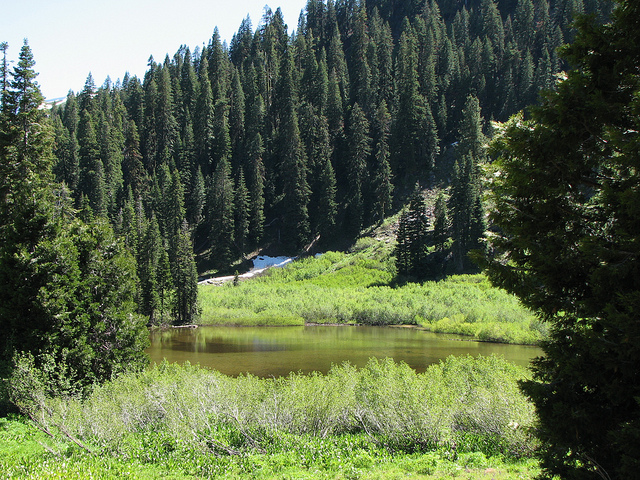Hiking Sticks
Hiking sticks (or poles as they are sometimes called) are meant to help prevent injury, help prop you up in case you slip and fall, and help take the pressure off your joints to minimize bone and muscle overuse injuries. There are two kinds of hiking sticks: 1) Extremely light-weight and 2) Real wood hiking sticks that are usually more sturdy, but slightly heavier.

Wooden Sticks
Wooden hiking sticks are usually more sturdy and durable, but they are also heavier and can cost a little bit more. Additionally, they can range in quality and craftsmanship of the wood-carving. The sticks do tend to be really sturdy and many of the types of wood that are used can at the same time be very light while still be capable of withstanding heavy duty and rugged terrain during hiking and backpacking trips. Solid and real wood sticks can be relied on to hold you up if you slip up on the trail, or really need support to protect your knees, ankles or hips.
Hickory Wood
While real wood sticks can be made out of any type of wood, a nice and inexpensive wood is hickory. The hickory hiking sticks are usually priced competitively with the small fiber poles. The hickory wood is perfect for a hiking stick because it is at the same time sturdy and light. There are many walking sticks which are made out of new and complex materials, which are lighter in weight, but very few of them tend to be sturdy enough to really be reliable. Hickory is common enough that the stick is not expensive, light and still durable and tough.
Most people are not familiar with the actual wood just from hearing the term "hickory" so just to get a sense of the real strength of the wood, consider that many baseball bats are also made out of this wood! The stick are often sprayed with a protective clear coat lacquer to bring out the natural beauty of the hickory wood.
Free Form Hiking Stick
The sticks often do not have a handle which is sometimes better. The top of the stick has a wrist band, but the real advantage of the stick is that it is thick enough to grip comfortably. It is also quite ergonomic. Typical handles often force awkward hand and arm angles, but the thick wooden sticks offer a nice grip and the ability to comfortably lean on it, all as I walk in natural motion.
Alloy or Fiber Hiking Poles
Non-wood hiking poles can be made out of different materials which can be much lighter, and still quite sturdy (although they almost never look very sturdy). They do have many interesting features. You can fold them to fit into very small spaces. They can weigh near to nothing. Additionally, most modern non-wood hiking poles can be adjusted for different heights, so if you have a family or a group of hikers, the same pole can be used by a number of people, which is much better than buying a hiking pole for everyone in the family.
Here is an example of some great lightweight, carbon fiber trekking poles to help you avoid injury.
Hiking Stick Sizes
Hiking sticks come in many different sizes. The more common lengths are 48 inches, 55 inches, and 58 inches. Of course, sizes range from child size to tall adult size with many different available options.

